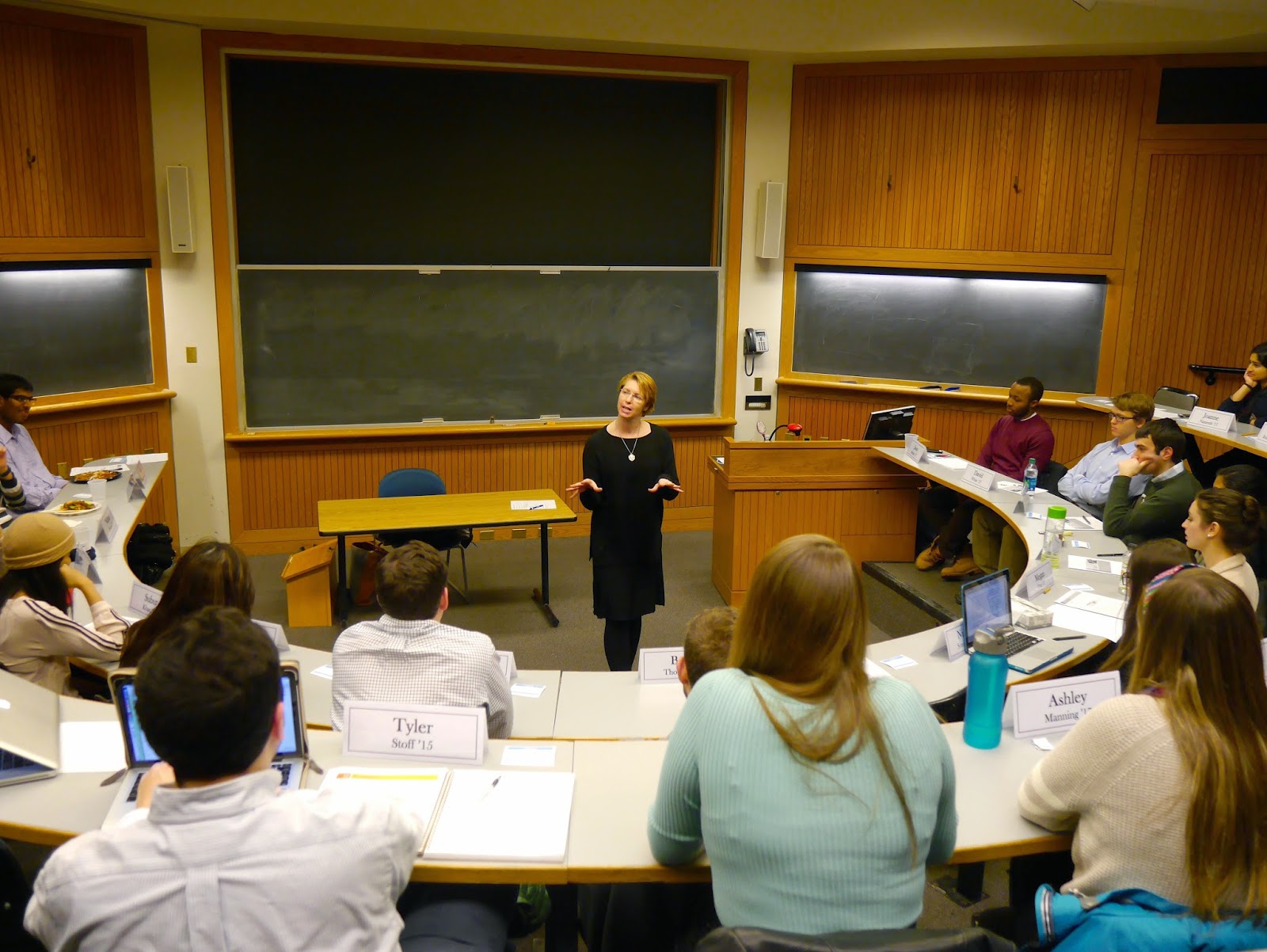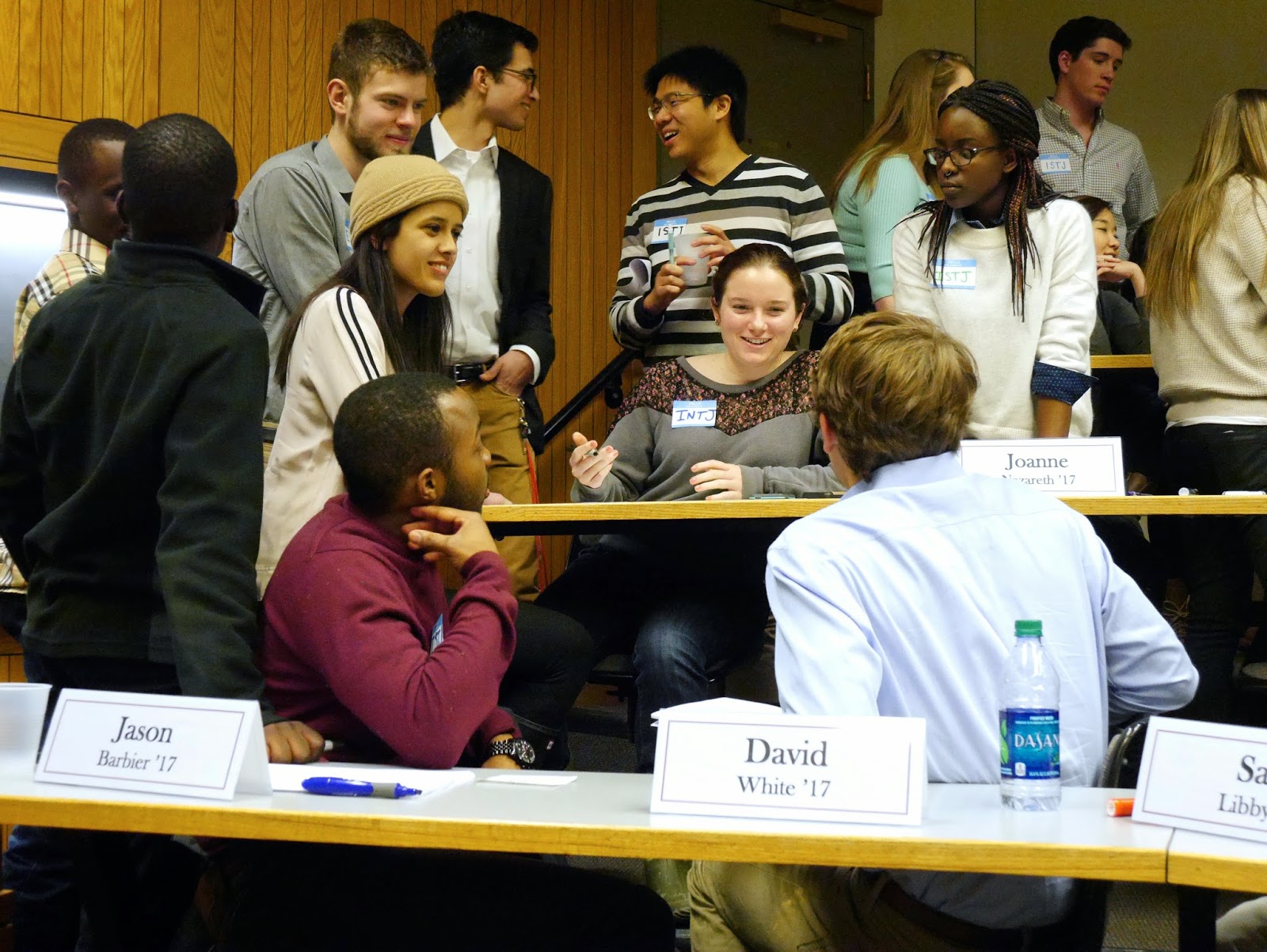- Public Policy
- Leadership
- Funding
- News & Events
- About the Center
Back to Top Nav
Back to Top Nav
Back to Top Nav
Back to Top Nav
This ongoing series explores sessions of the Management and Leadership Development Program (MLDP) through participant narratives. MLDP is a one-term program designed to develop citizen leaders among sophomores, juniors, and seniors at Dartmouth College. Led by expert guest speakers each week, sessions employ experiential teaching techniques to engage students through hands-on learning of core management and leadership skills.
Our second MLDP session with Professor Jennifer Sargent, a Visiting Professor of Writing at Dartmouth, began with as much enthusiasm as the first. This time teaching us about personalities and the workplace through a session entitled "Communicating with Professionalism," Professor Sargent began by describing an exercise we were to perform similar to those she taught new judges at the National Judicial College in Reno, Nevada.
 |
| Author Tyler Stoff '15 and other MLDP participants listen as Professor Sargent begins a discussion of the MBTI assessment. Photo by Abigail Chen '17. |
"We are creatures of our brains. The minute we come out, we are hard wired for four preferences," stated Professor Sargent as she began an explanation of the Myers-Briggs Type Indicator assessment, or MBTI, for personality traits. Having brought these completed assessments to the session, we were eager to hear what the interesting, four-letter combinations we were tested into really represented. There are sixteen possible MBTI outcomes. Sensing anxiety in the room, Professor Sargent was quick to emphasize that "There is no bad combination of letters. There is no good combination of letters."
Before delving into the specifics of the meaning behind the letters from this 93-question personality test, Professor Sargent lightened the mood by talking about its correlation with marriage statistics. First time spouses tend to skew toward different letters from each other, and thus preferences. For those who divorce and re-marry, their subsequent spouses tend to have similar preferences. Professor Sargent brought this into her own life by telling us the story of her current husband. Though apprehensive about marrying again, she became convinced in the probable success of a relationship due to the immense similarity in her now-husband's MBTI assessment. The couple share three out of their four letters.
Professor Sargent then had us make use of the blank name tags in front of us to write down and then label ourselves with our MBTI letters. Again, she implored us not to make judgements. Describing the validity of the assessment, Professor Sargent stressed that it must be taken correctly to achieve a consistent result. You also "have to take this test with your gut," she said, highlighting the intended measurement of personality instincts rather than aspirational positions.
A clear PowerPoint presentation reviewed the meanings behind the different letters and letter combinations. The accompanying lecture included examples of people with the "Extraversion" characteristic thinking only after having raised their hands to speak during class. Those with "Introversion," by contrast, may share less frequently while giving more thought to what they have to say. Different characteristics may highlight different people’s strengths, but deficiencies are mere areas of needed growth, not weaknesses. "Often, people will try to find ways around or avoid doing things that call on their non-preferences," expounded Professor Sargent as she had us attempt to write with our non-dominant hands. She stated a need to lean into discomfort and work on areas of needed growth. "You’ve gotta cut preferences slack when you’re trying to communicate," the professor summarized.
 |
| MLDP participants work through an activity designed to highlight personality differences. Photo by Abigail Chen '17. |
After this explanation, the program participants were split into four groups with different and distinct MBTI characteristics for an activity centered around planning a trip. With the task of plotting the details of a vacation with a group of theoretically like-minded people, the program’s groups broke down largely along practical and decisive lines versus more aspirational and less rigid itineraries. My group even planned two trips in the allotted time due to its decisiveness.
My enthusiasm for this activity was tempered due to even the variety of letter combinations present within theoretically similar groups indicated that there is far more than a binary to group thinking. Even allowing for the full sixteen combinations, however, I think that people are more complex in their personalities than a four factor test can measure or articulate. Despite my qualms, the rest of the program participants largely nodded in agreement with Professor Sargent’s summaries on personalities and personality types. It was certainly good advice to note that groups with highly different personality traits can utilize their distinct skills accordingly and to great benefit.
Professor Sargent’s final thought was on the number of program participants with the “Judging” trait in the audience. This is apparently indicative of leadership qualities, and there are understandably a lot of potential leaders in the Rockefeller Center’s Management Development and Leadership Program.
-Written by Tyler Stoff' '15, Winter 2015 MLDP Participant